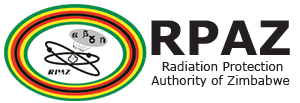The Discovery of Radioactivity
In 1896 a French physicist by the name of Henri Becquerel was conducting research on X-rays that had been discovered by Wilhelm Roentgen in 1895. He was using natural fluorescent minerals to study the properties of X-rays. He noted that in order for fluorescent substances to emit energy they first required an outside source from which to initially derive the energy.
In March of 1896, like many scientific discoveries, Becquerel stumbled upon a new phenomenon by accident. During a time of overcast weather he found that he could not use the sun as an initiating energy source for his experiments. He put his wrapped photographic plates away in a darkened drawer, along with some crystals containing uranium. Becquerel was later surprised when he developed the plates and discovered intense images instead of the expected weak ones. He then put forth the hypothesis that the rays, whose effects were greatly similar to the effects produced by X-rays, were invisible rays emitted by the crystals and persisting much longer in duration than the luminous rays emitted by fluroscent materials.
By May 1896, after other experiments, Becquerel arrived at the correct explanation, that the penetrating radiation came from the uranium itself, without any need for excitation by an external energy source – the crystals emitted rays on their own!
There followed a period of intense research into this phenomenon which was then named ‘Radioactivity’ by another French physicist named Marie Curie together with her husband Pierre Curie. They determined that the element thorium was also radioactive and discovered additional radioactive elements – polonium and radium.
In 1903, Becquerel shared the Nobel Prize in Physics with Pierre and Marie Curie in recognition of extraordinary services they had rendered by their discovery of spontaneous radioacticity. Furthermore the SI unit for radioactivity, the Becquerel (Bq), was named after him.
The discovery of radioactivity ushered in the atomic age which changed the face of both modern medicine and modern science.
By Dhruv Keshav
